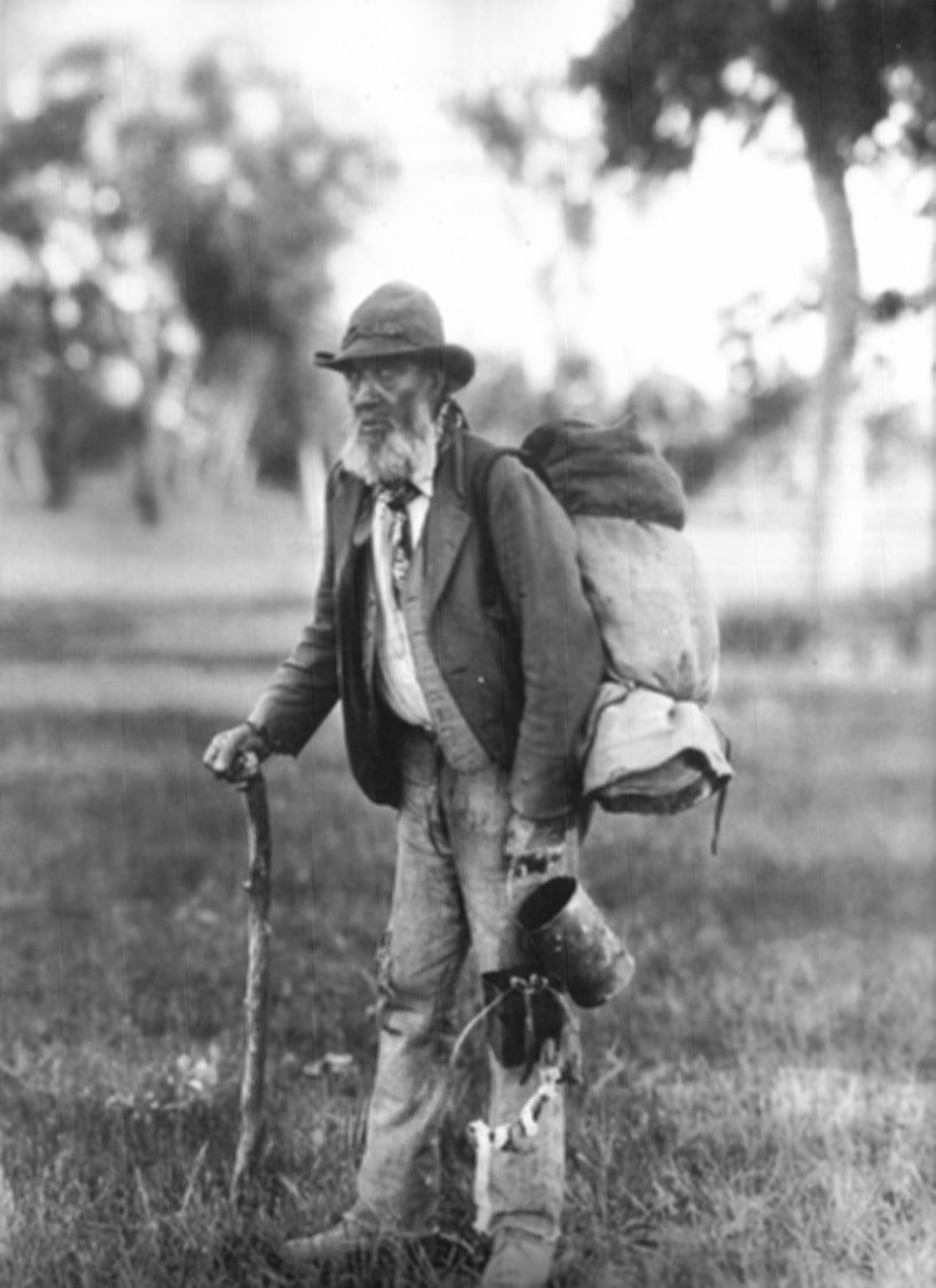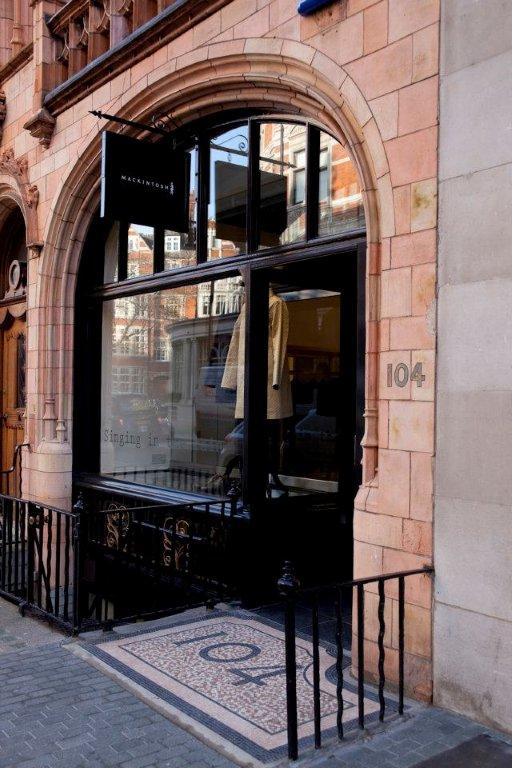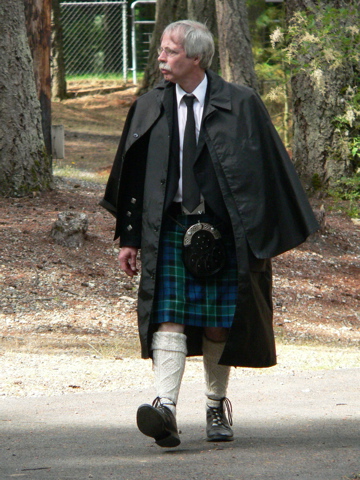|
Oilcloth
Oilcloth, also known as enameled cloth or American cloth, is close-woven cotton duck or linen cloth with a coating of boiled linseed oil to make it waterproof. Manufacture Boiled linseed oil was prepared by a long boiling of linseed oil with metal salts, originally lead dross. The modern oil is less toxic, but also less suitable for making oilcloth. Re-enactors may boil their own oil in the search for a correctly coloured oilcloth. Oilcloth used for weatherproofing may have used a mixture of lead and manganese salts, the sienna and umber pigments, to give a more humidity-resistant cure. The fabric was first stretched on a tenter frame and sized with animal gelatine. The oil was then applied and allowed to cure between coats. As the cure relies on oxidation by the air, thin coats and long cure times between are required. Overlaps between sheets of fresh oilcloth would amalgamate naturally when pressed together. This tendency also led to the cloth sticking together when folde ... [...More Info...] [...Related Items...] OR: [Wikipedia] [Google] [Baidu] |
Boiled Linseed Oil
Linseed oil, also known as flaxseed oil or flax oil (in its edible form), is a colorless to yellowish oil obtained from the dried, ripened seeds of the flax plant (''Linum usitatissimum''). The oil is obtained by pressing, sometimes followed by solvent extraction. Owing to its polymer-forming properties, linseed oil is often blended with combinations of other oils, resins or solvents as an impregnator, drying oil finish or varnish in wood finishing, as a pigment binder in oil paints, as a plasticizer and hardener in putty, and in the manufacture of linoleum. Linseed oil use has declined over the past several decades with increased availability of synthetic alkyd resins—which function similarly but resist yellowing. Structure and composition : 450px, Representative triglyceride found in a linseed oil, a triester ( , and Linseed oil is a triglyceride, like other fats. Linseed oil is distinctive for its unusually large amount of α-linolenic acid, which oxidises in air. T ... [...More Info...] [...Related Items...] OR: [Wikipedia] [Google] [Baidu] |
Waxed Cotton
Waxed cotton is cotton impregnated with a paraffin or natural beeswax based wax, woven into or applied to the cloth. Popular from the 1920s to the mid-1950s, the product, which developed from the sailing industry in England and Scotland, became commonly used for waterproofing. It has been replaced by more modern materials but is still used by the country sports community. There are two main drawbacks: waxed fabric is not very breathable, and it tends to be heavier and bulkier than modern synthetic waterproof materials. Background Early mariners noticed that wet sails were more efficient than dry sails, but their added weight slowed the vessels. From the 15th century, mariners applied fish oils and grease to their heavy sailcloth. This resulted in more efficient sails in dry weather and lighter sails in wet weather. Out of the worn remnants they cut waterproof capes to keep themselves dry; these capes were the forerunner of the fisherman's slicker. From 1795, Arbroath-based sail ... [...More Info...] [...Related Items...] OR: [Wikipedia] [Google] [Baidu] |
Ulster Coat
The Ulster is a Victorian working daytime overcoat, with a cape and sleeves. The Ulster is distinguished from the Inverness coat by the length of the cape. In the Ulster, the cape only reaches just past the elbows, allowing free movement of the forearms. In the Inverness coat, the cape is as long as the sleeves, and eventually replaced the sleeves in the Inverness cape. It was commonly worn by coachmen who would be seated outdoors in bad weather for long periods, but needed to use their arms to hold reins. Often made of hard-wearing fabrics, such as herringbone tweed, it was not a formal coat at the time, though in the 20th century a cape would be seen as such. It began to lose its cape in the 1890s, and now rarely has a cape, but continued to be used as a heavy-duty overcoat, often in a double-breasted style. A lightweight version of this coat is called an ulsterette. Origins Prior to the inception of the Ulster coat in the first half of the nineteenth century, the greatc ... [...More Info...] [...Related Items...] OR: [Wikipedia] [Google] [Baidu] |
Polyvinyl Chloride
Polyvinyl chloride (alternatively: poly(vinyl chloride), colloquial: vinyl or polyvinyl; abbreviated: PVC) is the world's third-most widely produced synthetic polymer of plastic (after polyethylene and polypropylene). About 40 million tons of PVC are produced each year. PVC comes in rigid (sometimes abbreviated as RPVC) and flexible forms. Rigid PVC is used in construction for pipes, doors and windows. It is also used in making plastic bottles, packaging, and bank or membership cards. Adding plasticizers makes PVC softer and more flexible. It is used in plumbing, electrical cable insulation, flooring, signage, phonograph records, inflatable products, and in rubber substitutes. With cotton or linen, it is used in the production of canvas. Polyvinyl chloride is a white, brittle solid. It is soluble in ketones, chlorinated solvents, dimethylformamide, THF and DMAc. Discovery PVC was synthesized in 1872 by German chemist Eugen Baumann after extended investigation and experimenta ... [...More Info...] [...Related Items...] OR: [Wikipedia] [Google] [Baidu] |
Tent
A tent is a shelter consisting of sheets of fabric or other material draped over or attached to a frame of poles or a supporting rope. While smaller tents may be free-standing or attached to the ground, large tents are usually anchored using guy ropes tied to stakes or tent pegs. First used as portable homes by nomads, tents are now more often used for recreational camping and as temporary shelters. Tents range in size from " bivouac" structures, just big enough for one person to sleep in, up to huge circus tents capable of seating thousands of people. Tents for recreational camping fall into two categories. Tents intended to be carried by backpackers are the smallest and lightest type. Small tents may be sufficiently light that they can be carried for long distances on a touring bicycle, a boat, or when backpacking. The second type are larger, heavier tents which are usually carried in a car or other vehicle. Depending on tent size and the experience of the person or peop ... [...More Info...] [...Related Items...] OR: [Wikipedia] [Google] [Baidu] |
Bedroll
The cowboy bedroll was an American Old West precursor to the modern sleeping bag, which carried a man's bed and some personal belongings in a waterproof shell. In Australia, it is called a swag. Origins It is unclear when or how the roll developed, but it has been used in its variations from the United States, Canada, Mexico, Argentina, Australia, South Africa, among other places. However, one item just predating the "Cowboy" era that was very familiar to most cowboys – many of whom were veterans of the American Civil War – was the Confederate soldier's rolled bedding that was carried slipped diagonally over one shoulder and tied together just over one hip. A vital part of this "bedding roll" was the "rubber blanket", a rectangle of heavy canvas with brass eyelets at the corners and edges, that was heavily coated with vulcanized "Goodyear" latex rubber. Each Federal soldier was issued one, but both sides write of having acquired two or more, either through capture or acqui ... [...More Info...] [...Related Items...] OR: [Wikipedia] [Google] [Baidu] |
Tablecloth
A tablecloth is a cloth used to cover a table. Some are mainly ornamental coverings, which may also help protect the table from scratches and stains. Other tablecloths are designed to be spread on a dining table before laying out tableware and food. Some tablecloths are designed as part of an overall table setting, with coordinating napkins, placemats, or other decorative pieces. Special kinds of tablecloth include "runners" which overhang the table at two ends only and "table protectors" which provide a padded layer under a normal tablecloth. Shapes and sizes The most common shapes for tablecloths are round, square, oval, and oblong, or rectangular, corresponding to the most common table shapes. Tablecloths usually have an overhang, referred to as the "drop." The drop is generally on each side of the table, with a shorter drop for casual dining and a longer drop for more formal occasions. Sometimes a floor-length cloth is used. Custom-made tablecloths are also available, a ... [...More Info...] [...Related Items...] OR: [Wikipedia] [Google] [Baidu] |
Mackintosh
The Mackintosh raincoat (abbreviated as mac) is a form of waterproof raincoat, first sold in 1824, made of rubberised textile, fabric. The Mackintosh is named after its Scotland, Scottish inventor Charles Macintosh, although many writers added a letter ''k''. The variant spelling of "Mackintosh" is now standard. Although the Mackintosh coat style has become generic, a genuine Mackintosh coat is made from rubberised or rubber laminated material. History It has been claimed that the material was invented by the surgeon James Syme, but then copied and patented by Charles Macintosh; Syme's method of creating the solvent from coal tar was published in Thomson's ''Annals of Philosophy'' in 1818; this paper also describes the dissolution of natural rubber in naphtha. However, a detailed history of the invention of the Mackintosh was published by Schurer. The essence of Macintosh's process was the sandwiching of an impermeable layer of a solution of rubber in naphtha between two ... [...More Info...] [...Related Items...] OR: [Wikipedia] [Google] [Baidu] |
Inverness Cape
The Inverness cape is a form of weatherproof overcoat, outer-coat. It is notable for being sleeveless, the arms emerging from armscyes beneath a cape (the sleeved version is an Inverness coat; the shorter-caped, sleeved version is an Ulster coat). The cape is also called ''havelock'' after Henry Havelock. The Inverness cape is a water-repellent garment. The extra layer of cloth at the shoulders traditionally hindered rain from soaking through the wool. History The garment began in the 1850s as the Inverness coat, an outer coat with sleeves covered by a long cape, reaching the length of the sleeve. By the 1870s, the cape was divided in two, and a small "capelet"-like "wing" on each side was sewn into the side seams, not taken across the back. In the 1880s, the sleeves were removed entirely, leaving only the armholes beneath the cape, to form the Inverness ''cape''. The fronts of the coat may be finished in either of two styles: in one, the more formal, the topcoat is finished ... [...More Info...] [...Related Items...] OR: [Wikipedia] [Google] [Baidu] |
Gelatine
Gelatin or gelatine () is a translucent, colorless, flavorless food ingredient, commonly derived from collagen taken from animal body parts. It is brittle when dry and rubbery when moist. It may also be referred to as hydrolysis, hydrolyzed collagen, collagen hydrolysate, gelatine hydrolysate, hydrolyzed gelatine, and collagen peptides after it has undergone hydrolysis. It is commonly used as a gelling agent in food, beverages, medications, drug or vitamin capsule (pharmacy), capsules, photographic films, photographic paper, papers, and cosmetics. Substances containing gelatin or functioning in a similar way are called gelatinous substances. Gelatin is an irreversibly hydrolysis, hydrolyzed form of collagen, wherein the hydrolysis reduces protein fibrils into smaller peptides; depending on the physical and chemical methods of denaturation, the molecular weight of the peptides falls within a broad range. Gelatin is present in gelatin desserts, most gummy candy and marshmallows, i ... [...More Info...] [...Related Items...] OR: [Wikipedia] [Google] [Baidu] |







